Writing a service level agreement (SLA) can feel like trying to navigate a maze, but it doesn't have to be overwhelming. This letter will serve as a clear framework for both parties, detailing the essential services provided, performance metrics, and expectations. By establishing these guidelines, we create a solid foundation for a successful partnership that benefits everyone involved. Ready to dive in and learn how to draft the perfect SLA?
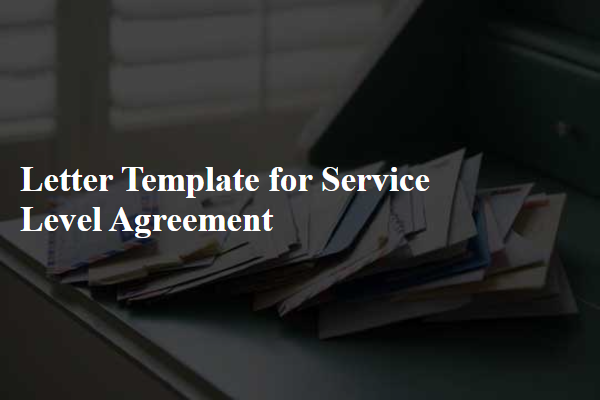
Parties Involved
Service Level Agreements (SLAs) typically outline the expectations and responsibilities between involved parties. In a typical SLA, the key parties often include the service provider, which can be a company (like a cloud service provider), and the client or customer receiving the service (such as a business or organization). Definitions of roles are crucial, specifying the service provider's responsibilities for delivering timely support and maintaining service performance levels. The client's obligations may include providing necessary access and information for service delivery. The SLA should also identify any third parties, such as technology partners or vendors, that may play a role in the service delivery. This comprehensive outline ensures clarity in responsibilities, expectations, and accountability in service provision.
Scope of Services
A service level agreement (SLA) outlines the expectations and commitments between service providers and clients regarding the delivery of services. The scope of services section specifies the range of services to be provided, detailing aspects such as response times, availability, and quality standards. For instance, an IT support service might guarantee 99.9% system uptime, meaning the network is expected to be operational 24/7, with only brief scheduled maintenance during off-peak hours. Additionally, it may include specific services like software updates, troubleshooting, and user training, setting clear performance metrics such as a 1-hour response time for critical incidents and 4 hours for non-critical issues. Clear definitions within this scope ensure that both parties understand the extent of services rendered and the associated responsibilities, minimizing potential disputes.
Performance Metrics
Performance metrics are essential for evaluating the efficiency and effectiveness of service delivery in a Service Level Agreement (SLA). Key performance indicators (KPIs), such as response time, resolution time, and uptime percentage, provide quantitative measures of service quality. For instance, a target response time of 1 hour for critical issues ensures prompt engagement, while a resolution time of 4 hours guarantees timely solutions. Uptime percentage, ideally maintained at 99.9%, reflects system reliability, minimizing downtime. Regular performance reviews, scheduled monthly, help assess these metrics, ensuring adherence to agreed standards. In addition, customer satisfaction ratings can offer qualitative insights into users' experiences, further enriching the assessment of service performance.
Responsibilities and Obligations
Service Level Agreements (SLAs) outline the responsibilities and obligations of parties involved, ensuring clarity in expectations. Service providers must deliver services adhering to defined performance metrics, such as response time not exceeding 24 hours for support requests. Clients bear the responsibility of providing necessary access to systems, information, and equipment essential for service delivery. Both parties are obligated to communicate effectively, scheduling regular reviews to assess performance against agreed metrics, addressing any discrepancies as they arise. Compliance with relevant regulations, for instance, GDPR for data handling, is crucial for both parties to protect customer information. Each party should document incidents meticulously, ensuring accountability and maintaining operational transparency.
Terms and Conditions
A Service Level Agreement (SLA) establishes clear expectations surrounding service delivery and outlines the responsibilities of both the service provider and the client. Key components typically include service description, detailing the specific services provided, such as IT support or cloud hosting. Performance metrics, like response times (e.g., responding to critical requests within one hour), define acceptable levels of service. Uptime commitments signify availability standards, often aiming for 99.9% uptime, ensuring minimal disruption for users. Remedies for service level breaches outline penalties or credits, enhancing accountability in the agreement. Additionally, the governance section may specify review periods (e.g., quarterly assessments) for evaluating performance and discussing potential improvements, ensuring continued alignment between the service provider's capabilities and the client's needs.
Letter Template For Service Level Agreement Samples
Letter template of service level agreement for customer service operations
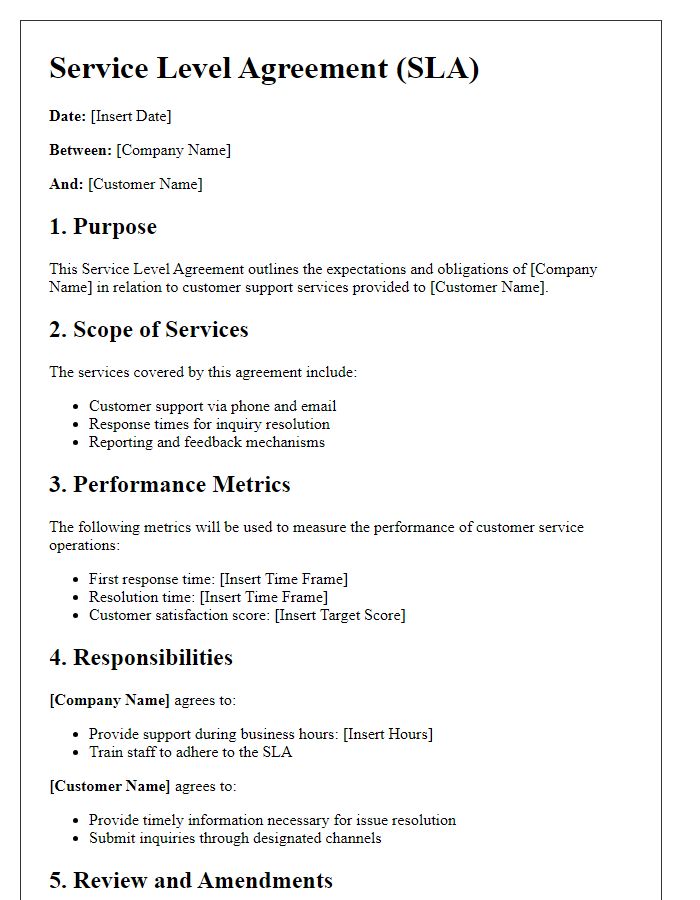
Letter template of service level agreement for logistics and transportation
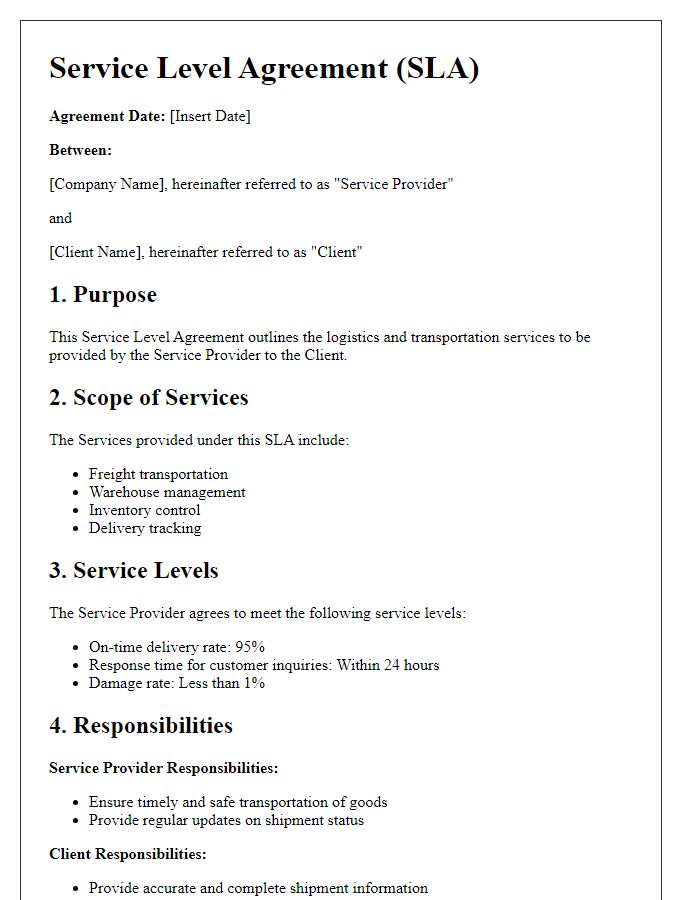
Letter template of service level agreement for software development projects
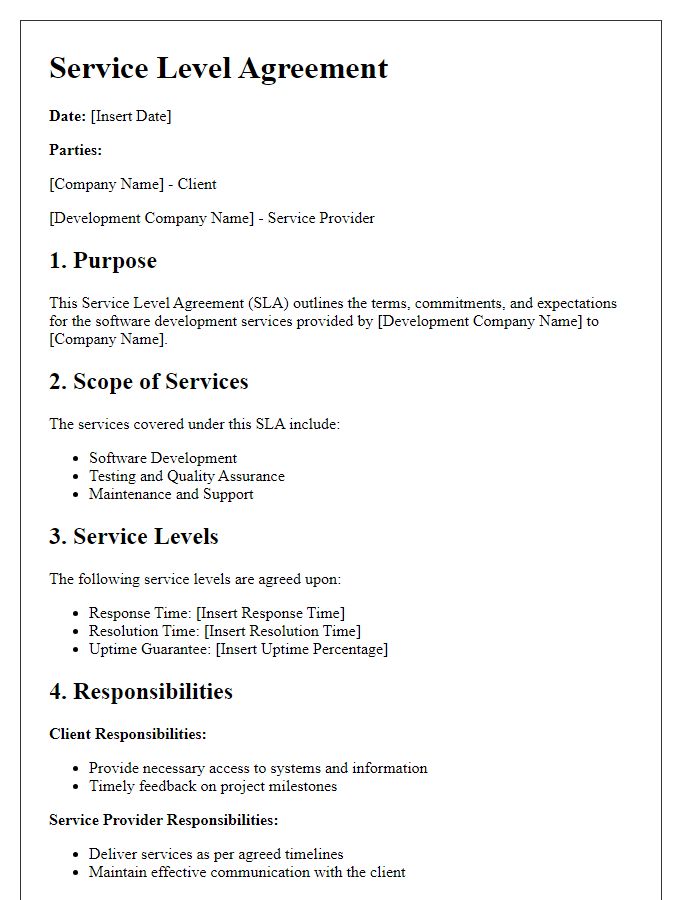


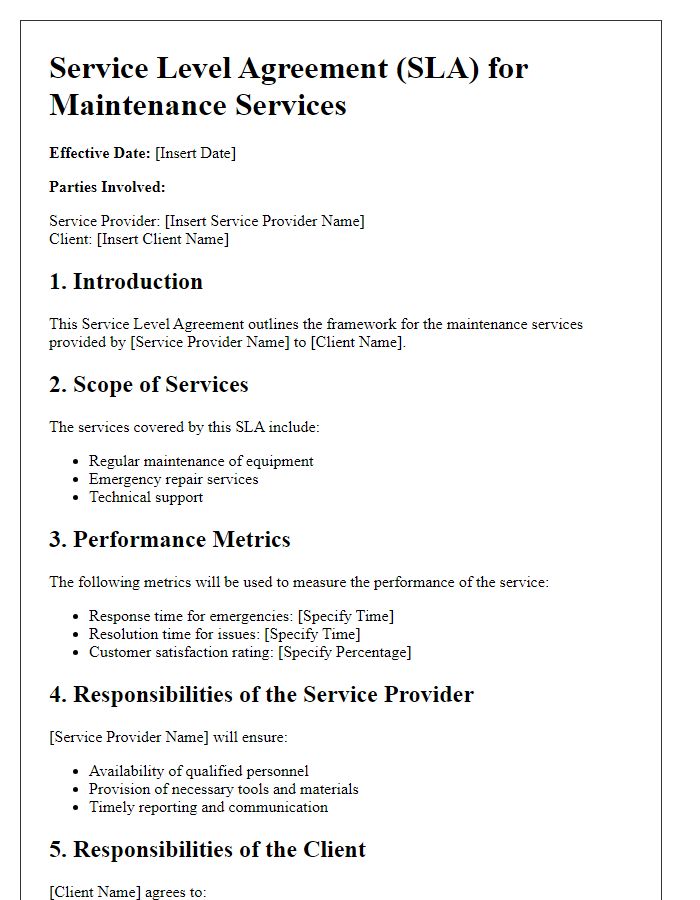
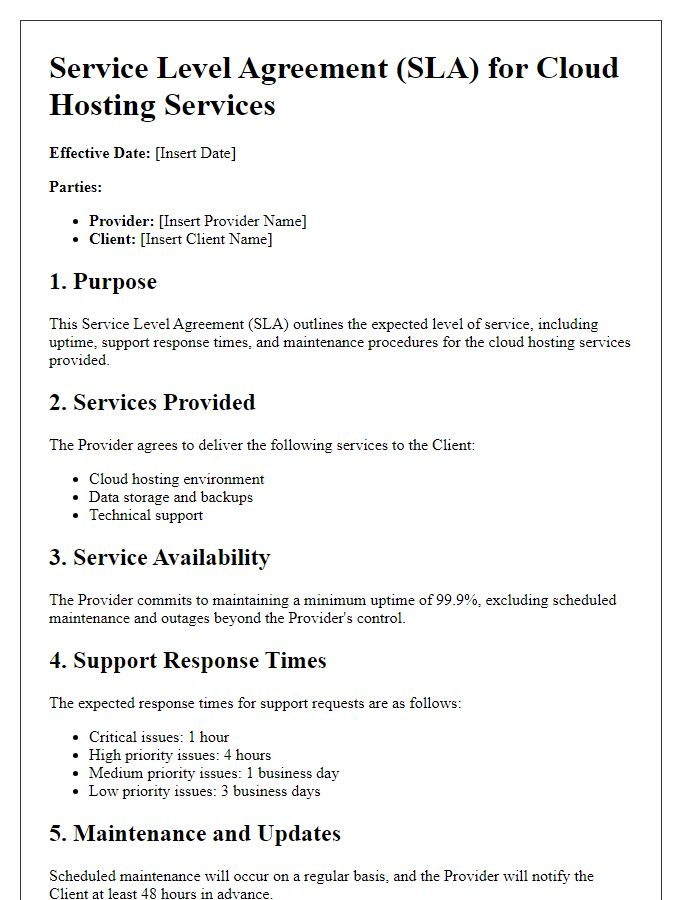
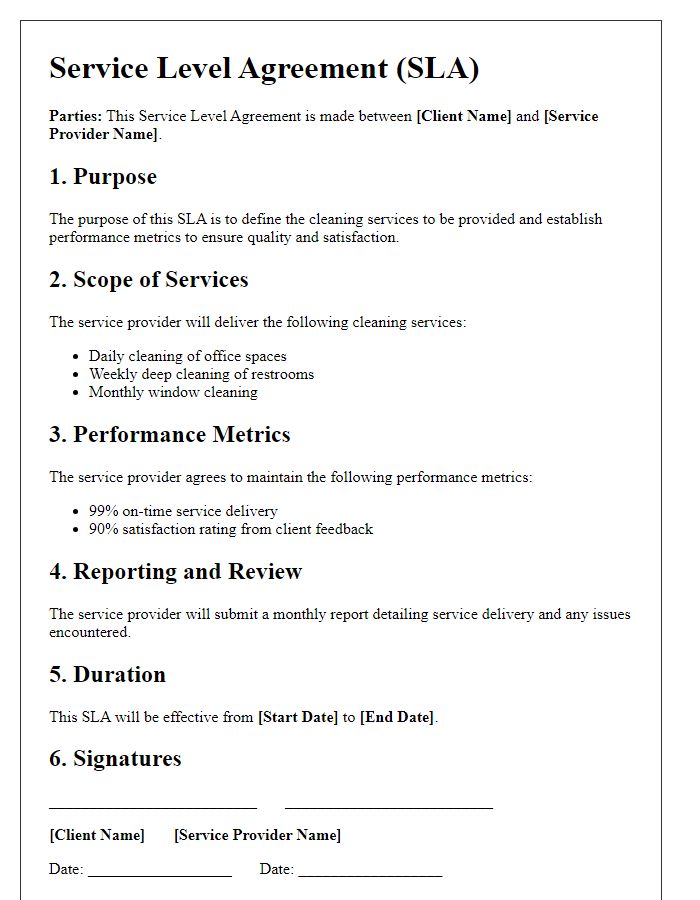
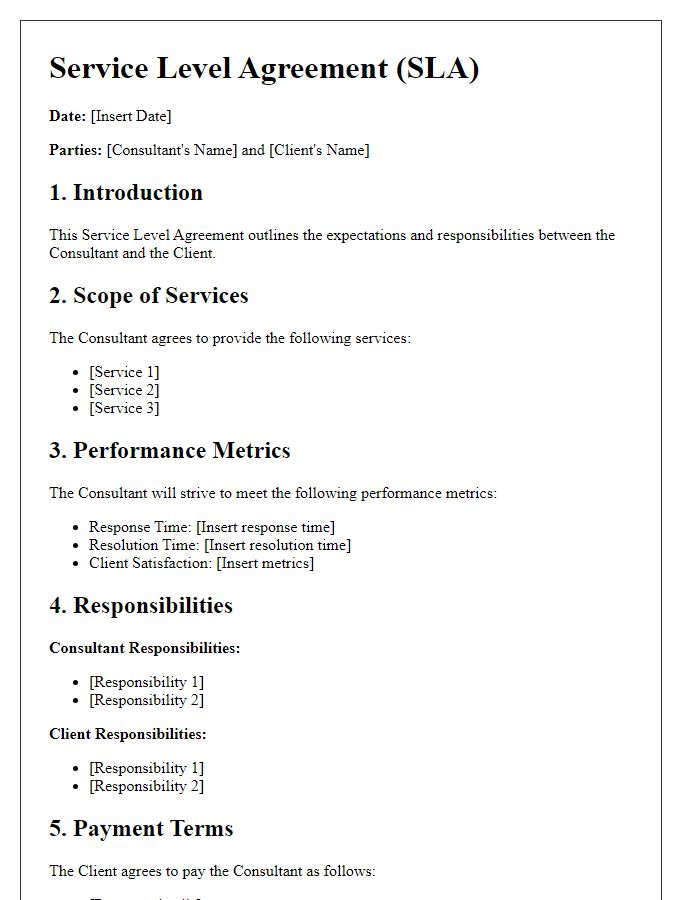
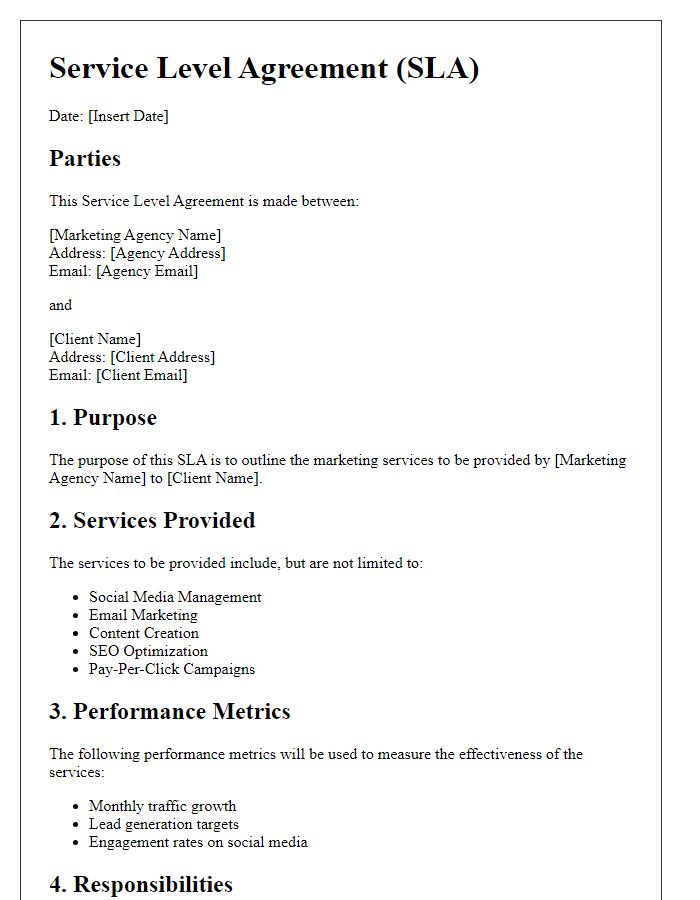
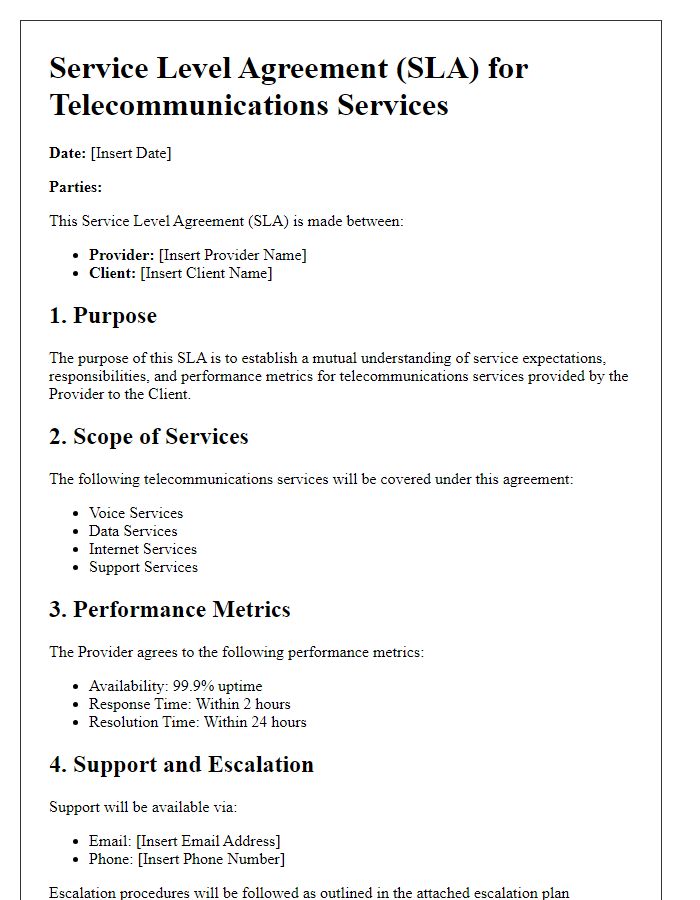


Comments